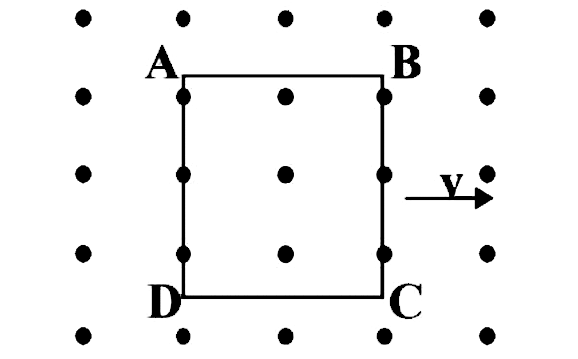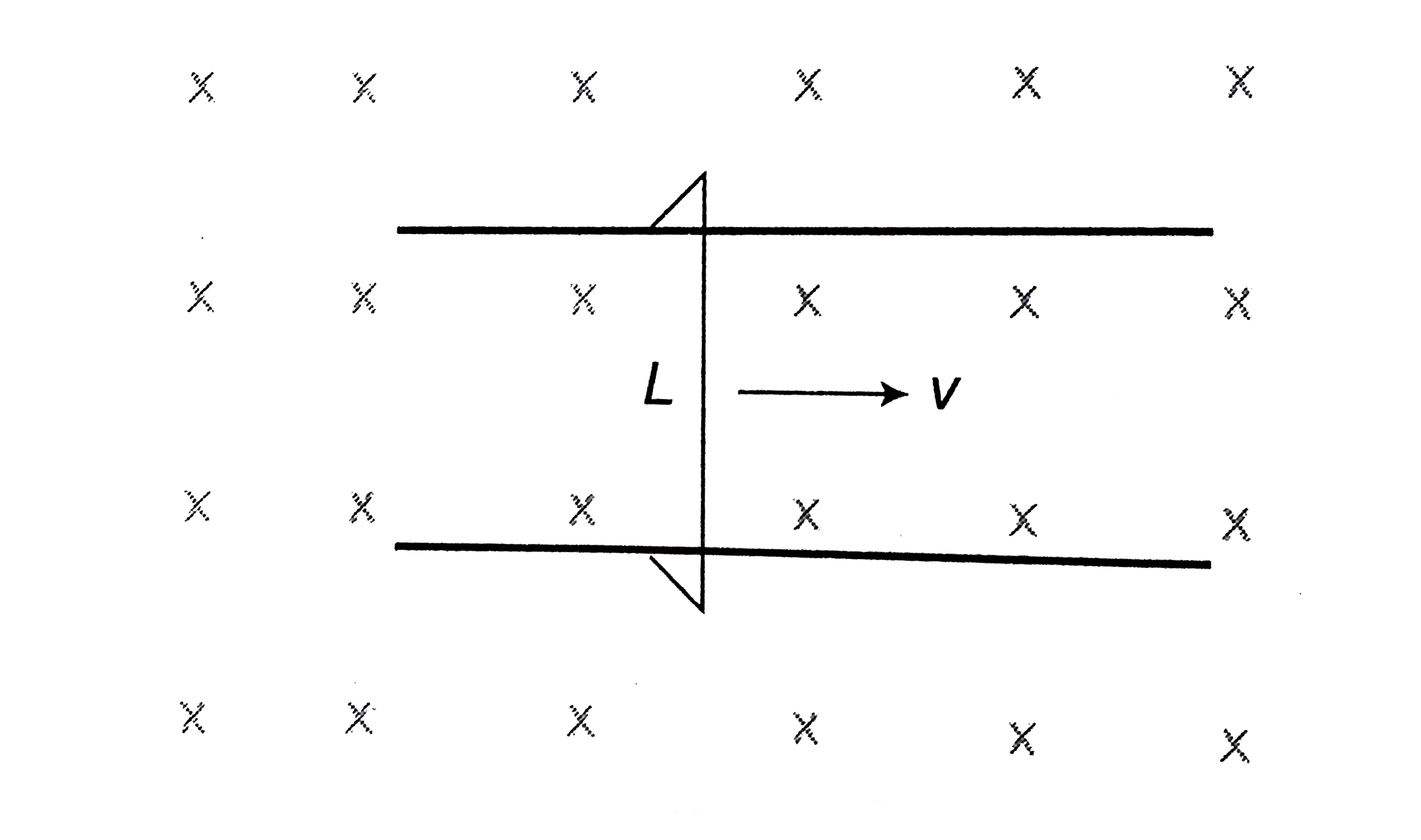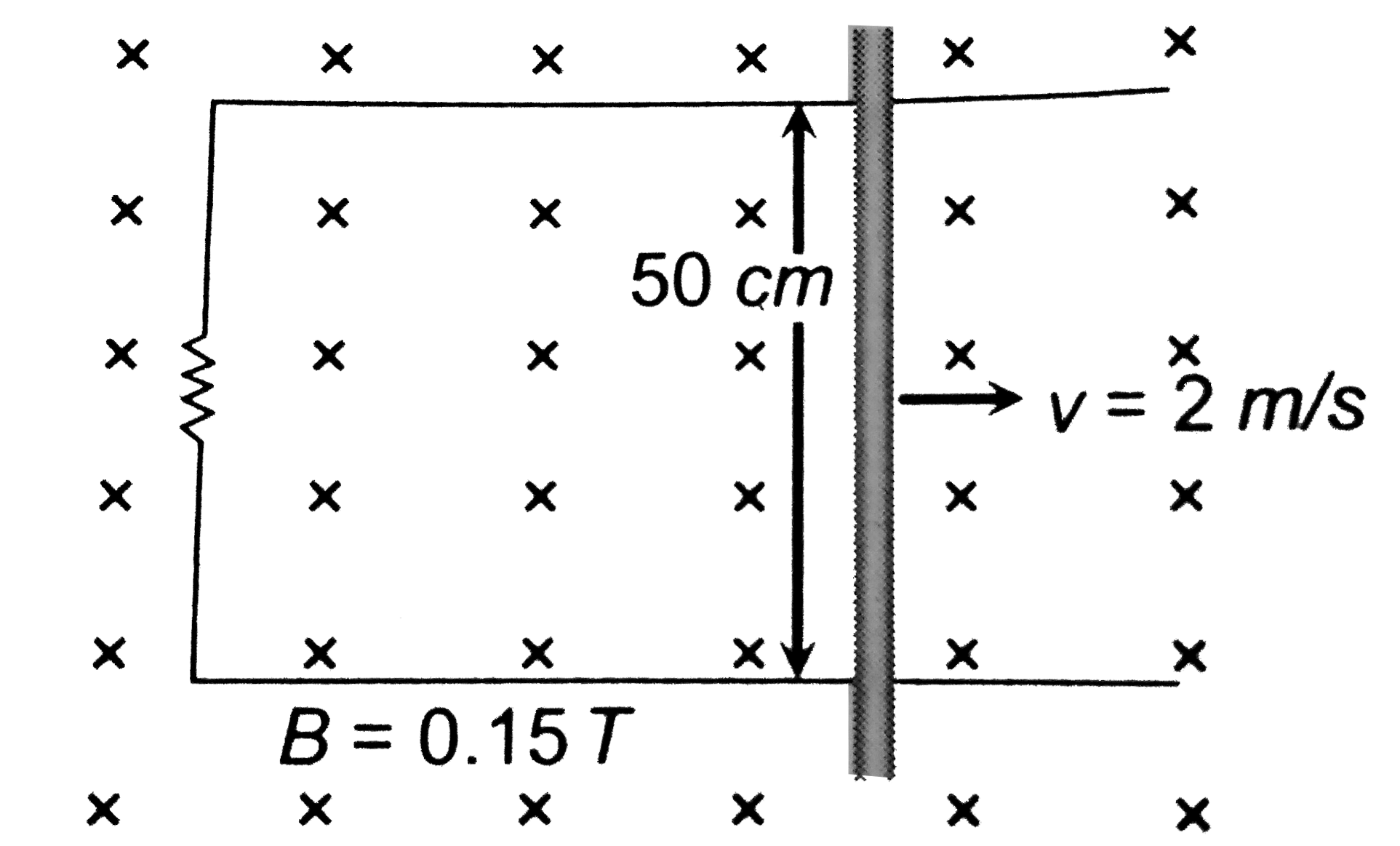Complete Solutions to Motional Electromotive Force of chapter ELECTROMAGNETIC INDUCTION of Class 12 book with complete answers and questions
| Class 12 | PHYSICS |
| Chapter | ELECTROMAGNETIC INDUCTION |
| NCERT FINGERTIPS | Motional Electromotive Force |
| Number Of Questions | 15 |
| Academic Year | 2023-24 |
A metallic square loop ABCD is moving in its own plane with velocity v in a uniform magnetic field perpendicular to its plane as shown in the figure. An electric field is induced

View SolutionA conductor is moving with the velocity `v` in the magnetic field and induced current is `I`. If the velocity of conductor becomes double, the induced current will be
View SolutionA circular coil expands radially in a region of magnetic field and no electromotive force is produced in the coil. This can be because
View SolutionA jet plane is travelling west at the speed of `1600kmh^(-1)`. The voltage difference developed between the ends of the wing having a span of `20m`, if the earth's magnetic field at the location has a magnitude of `5xx10^(-1)` T and the dip angle is `30^(@)` is
View SolutionA rectangular loop of sides 6 cm and 2 cm with a small cut is moving out of a region of uniform magnetic field of magnitude 0.4 T direction normal to the loop. The voltage developed across the cut if velocity of loop is `2cm^(-1)` in a direction normal to the longer side is
View SolutionIn the question number 40, if velocity is normal in the shorter side then voltage developed is
View SolutionFigure shows a wire sliding on two parallel, conducting rails placed at a separation `L` . A magnetic field `B` exists in a direction perpendicular to the plane of the rails. What force is necessary to keep the wire moving at a constant velocity `V` ?

View SolutionAs shown in the figure a metal rod makes contact and complete the circuit. The circuite is perpendicular to the magnetic field with `B=0.15`tesla. If the resistance is `3Omega` force needed to move the rod as indicated with a constant speed of `2m//sec` is

View SolutionA copper rod of length L rotates with an angular with an angular speed `'omega' ` in a uniform magnetic field B. find the emf developed between the two ends of the rod. The field in perpendicular to the motion of the rod.
View SolutionA 2 m long metallic rod rotates with an angular frequency `200 rad s^(-1)` about on axis normal to the rod passing through its one end. The other end of the rod is in contact with a circular metallic ring. A constant magnetic field of `0.5 T` parallel to axis exists everywhere. The emf developed between the centre and the ring is
View SolutionA wheel with 20 metallic spokes each of length 8.0 m long is rotated with a speed of 120 revolution per minute in a plane normal to the horizontal component of earth magnetic field H at a place. If `H=0.4xx10^(-4)` T at the place, then induced emf between the axle the rim of the wheel is
View SolutionA circular copper disc of 10 cm in diameter rotates at `1800` revolution per minute about an axis through its centre and at right angles to disc. A uniform field of induction B of `1Wb^(-2)m` is perpendicular to disc. What potential difference is developed between the axis of the disc and the rim?
View SolutionA metal conductor of length 1m rotates vertically about one of its ends at angular velocity 5 radians per second. If the horizontal component of earth's magnetic field is `0.2xx10^(-4)T`, then the emf developed between the two ends of hte conductor is
View SolutionA rod of length `l` rotates with a uniform angular velocity `omega` about its perpendicular bisector. A uniform magnetic field B exists parallel to the axis of rotation. The potential difference between the two ends of the rod is
View SolutionA metallic rod of 1 m length is rotated with a frequency of 50 `rev//s`, with on end hinged at the centre and the other end at the circumference of a circular metallic ring of radius 1 m, about an axis passing through the centre and perpendicular at to the plane of the ring. A constant uniform magnetic field of 1 T parallel to the axis is persent eveywhere. what is the e.m.f. between the centre and the metallic ring?
View Solution
Motional Electromotive Force questions and complete solutions for chapter ELECTROMAGNETIC INDUCTION of NCERT FINGERTIPS PHYSICS (HINGLISH) of Class 12